The Gallery Of Meteorites

Admire
Pallasite, PMG
Found in Kansas, USA, 1881
The Admire pallasite dates back to 1881—originally listed in the Meteoritical Bulletin as “Illinois,” the first specimen was found when a farmer in Lyon County struck it with his plow. Since that first chance encounter, several masses have been unearthed, including a 223-pound meteorite pulled out of the ground by “Meteorite Men” hosts Geoff Notkin and Steve Arnold.
The Meteorite Men with their custom Orange County Chopper unearthing a massive 223 lb Admire meteorite.

Brenham
Pallasite, PMG-an
Found in Kansas, USA, 1882
One of Dr. Nininger’s early expeditions was to the Brenham, Kansas strewnfield. In 1933 he conducted extensive excavations in a depression that was thought, at the time, to be a meteorite crater. Later work demonstrated that no craters were formed by Brenham pallasites, and that these meteorites happened to have landed in a natural depression or buffalo wallow. Harvey’s team uncovered numerous small, oval, metallic objects that were later proven to be weathered pallasite individuals. Dr. Nininger coined the term “meteorode” to describe these Brenham finds.
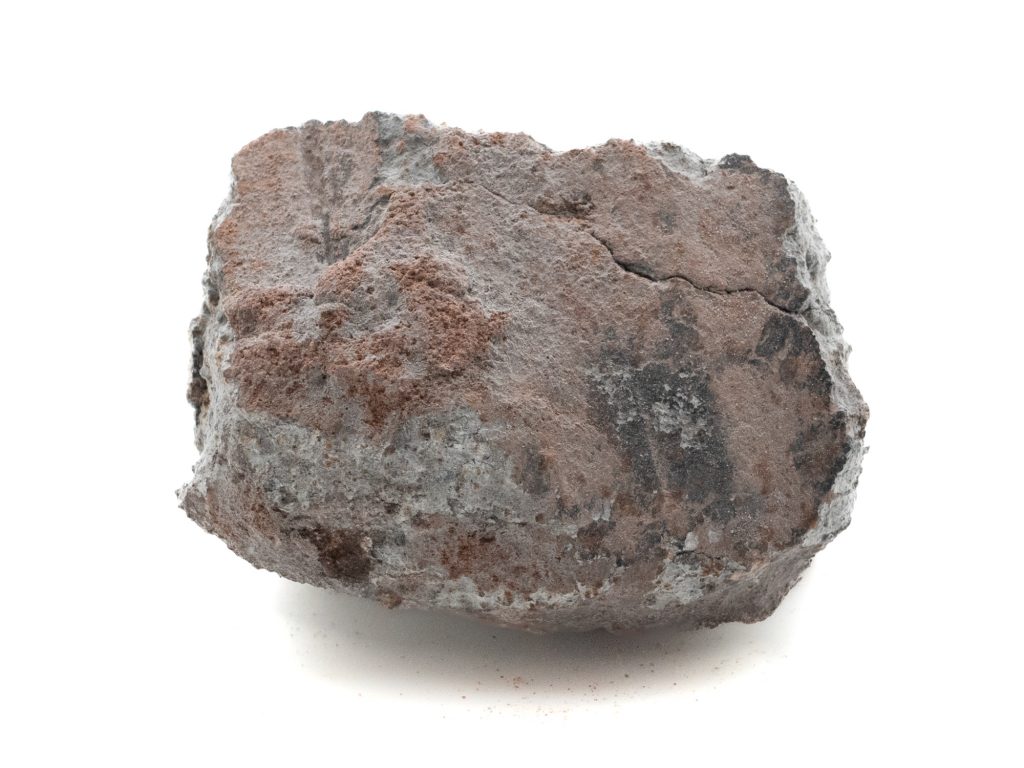
Carancas
Ordinary chondrite H4-5
Fell 15 September 2007, ~16: 45 UTC Carancas, Chucuito, Puno, Peru
The Carancas meteorite event occurred September 15, 2007 in Peru, near Lake Titicaca and the Bolivian border. Eyewitnesses reported saying “”boiling water started coming out of the crater, and particles of rock and cinders were found nearby””, and that “”fetid, noxious”” gases were escaping from the crater. The meteorite’s impact created a small crater in the soft clay soil, and approximately 600 villagers became ill after the event. Experts believed that the vaporization of troilite present in large quantities in Carancas, might have been the cause for the villagers’ illness. Villagers who visited the site after the impact also reported illness, though all who were affected reportedly recovered a few days later.
Carancas was classified by a team of scientists working at the University of Arizona. Found to be an H chondrite breccia, most Carancas pieces are without fusion crust and are light grey in color, with some visible chondrules and dark shock veins.
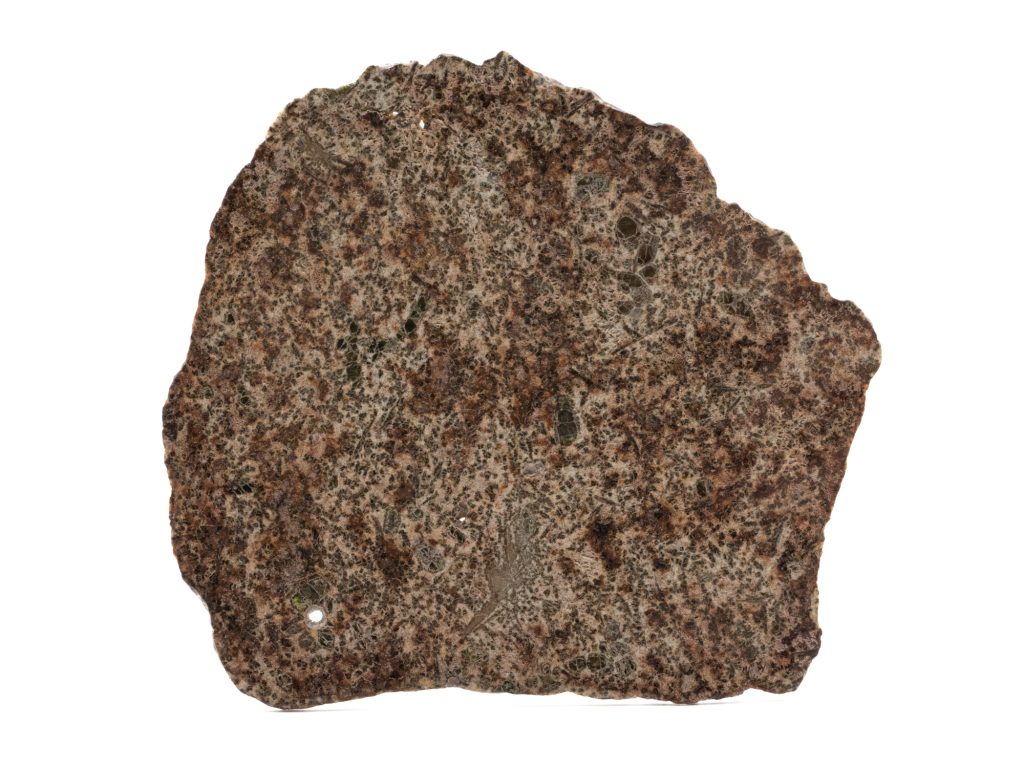
Erg Chech 002
Achondrite-ungrouped
Found in Algeria in May of 2020
The Erg Chech 002 (EC) is a remarkable meteorite that was discovered in the Erg Chech region of the Sahara Desert in Algeria. This meteorite is believed to be a fragment of a chondritic protoplanet, a type of celestial body that formed during the early stages of our solar system’s evolution. It has garnered significant attention and interest due to its exceptional age, as it is estimated to be over 4.566 billion years old, dating back to the very early days of our solar system.
One of the most intriguing aspects of the Erg Chech 002 meteorite is its composition. After analysis, the Erg Chech meteorite were determined to be the oldest volcanic rocks in the solar system — roughly 20 million years older than Earth. This designation is particularly significant because volcanic rocks provide valuable insights into the geological processes and conditions that existed during the early history of our planet.
The discovery of the Erg Chech 002 meteorite has contributed significantly to our understanding of the early solar system and Earth’s geological history. Its age and volcanic nature make it a rare and invaluable sample for scientific research. Ongoing studies and analyses of this meteorite are likely to provide further insights into the processes that shaped our planet and the celestial bodies that preceded it.

Fukang
Pallasite, PMG
Found in China, 2000
An extremely beautiful pallasite characterized by extraordinarily large and colorful olivine crystals. The main mass was discovered in 2000, and this meteorite has rapidly become a favorite among collectors due to the stunning and enormous olivine crystals. The absolute finest.

Glorieta Mountain
Pallasite, PMG-an
Found in New Mexico, USA, 1884
First discovered in the late 19th Century, Glorieta is one of the most remarkable and desirable American meteorites. The Glorieta strewnfield’s terrain is notoriously rugged and difficult to navigate and, over the years, scouring its steep and dangerous slopes has been a right of passage for the most determined of meteorite hunters.
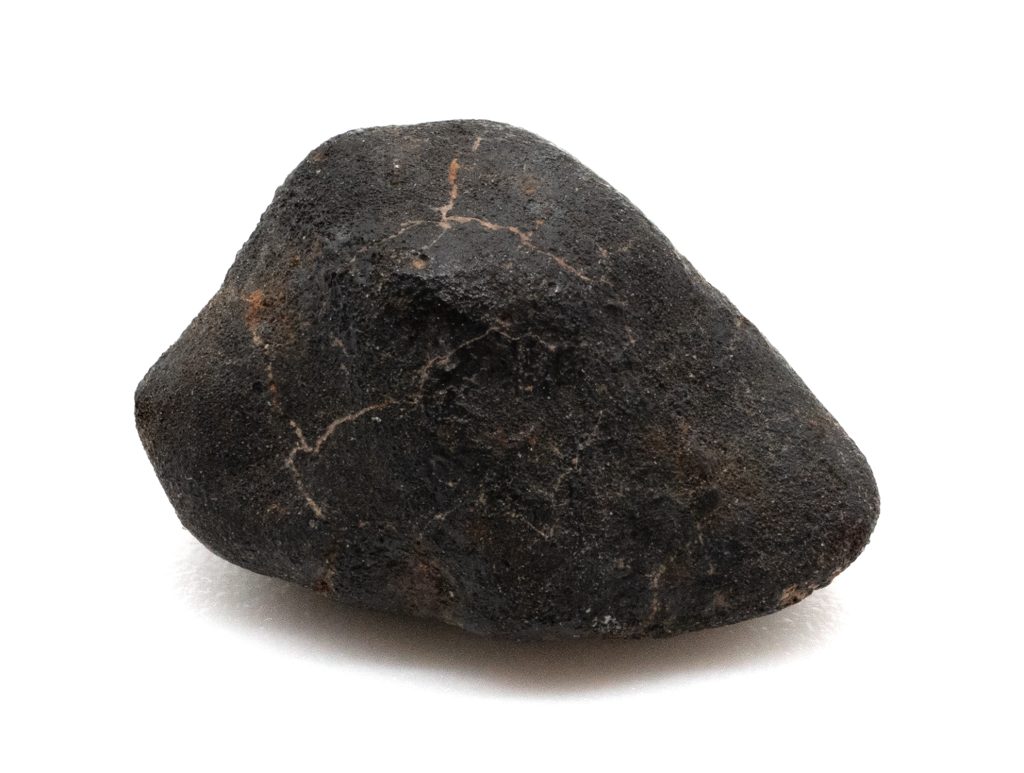
Holbrook
Ordinary chondrite, L/LL6
Witnessed fall in the United States, 1912
July 19, 1912, on a hot and dry desert summer evening, a series of loud booms, and several explosions rocked the quiet town of Holbrook, Arizona. Many thousand stones showered the ground, most the size of a pea. The largest weighing just 6 kilograms (14 pounds). Initially, an estimated 14,000 stones were recovered. Most with pristine rich-black fusion crust, which is obtained during its fiery journey through our atmosphere.
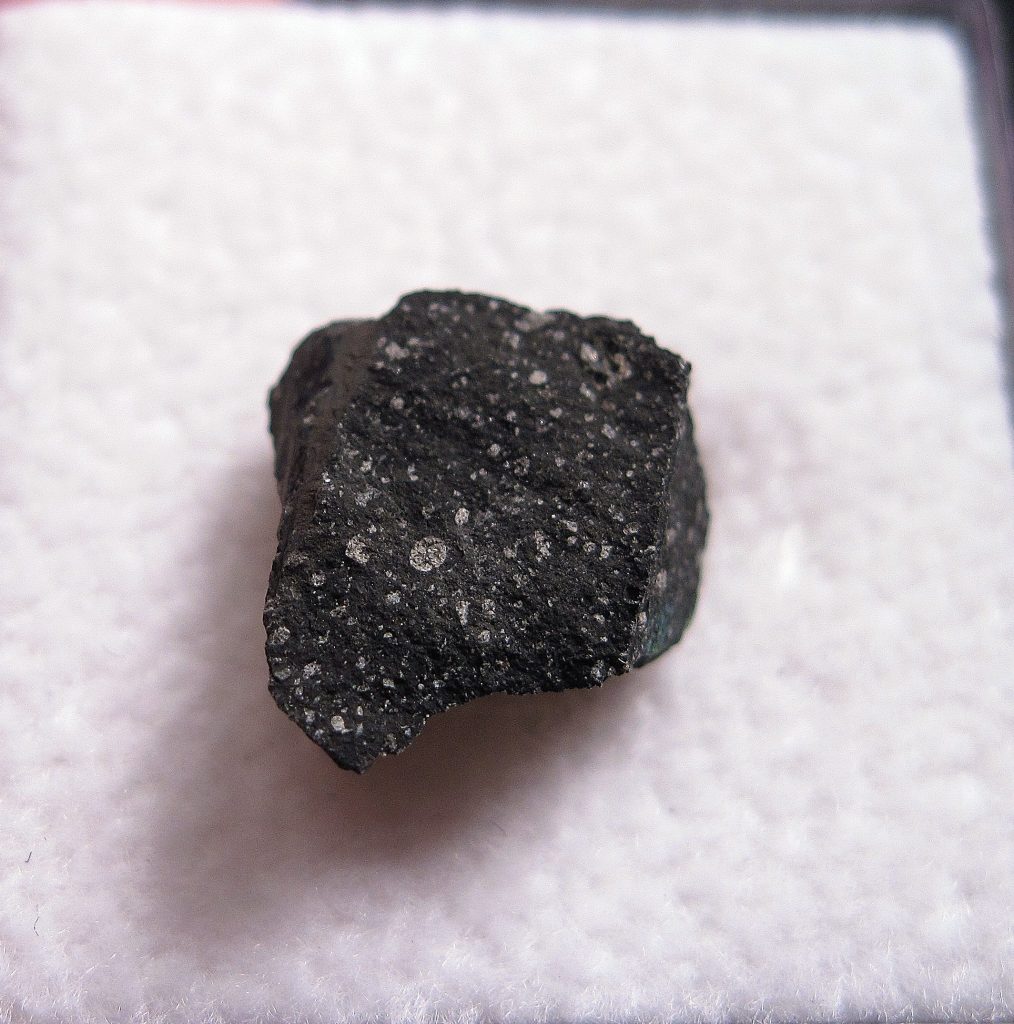
Murchison Stone Meteorite
Carbonaceous Chondrite, CM2
Witnessed Fall, 1969
The Murchison meteorite is a carbonaceous chondrite that fell to Earth September 28, 1969 at 11:00 am, near the town of Murchison, Victoria, Australia. It is one of the most studied meteorites due to its large size (over 100 kg) and its diverse composition, which includes organic compounds such as amino acids, nucleobases, and hydrocarbons. The Murchison meteorite is of particular interest to scientists studying the origins of life on Earth because it provides valuable insight into the chemical building blocks that may have been present on the early Earth and contributed to the emergence of life.
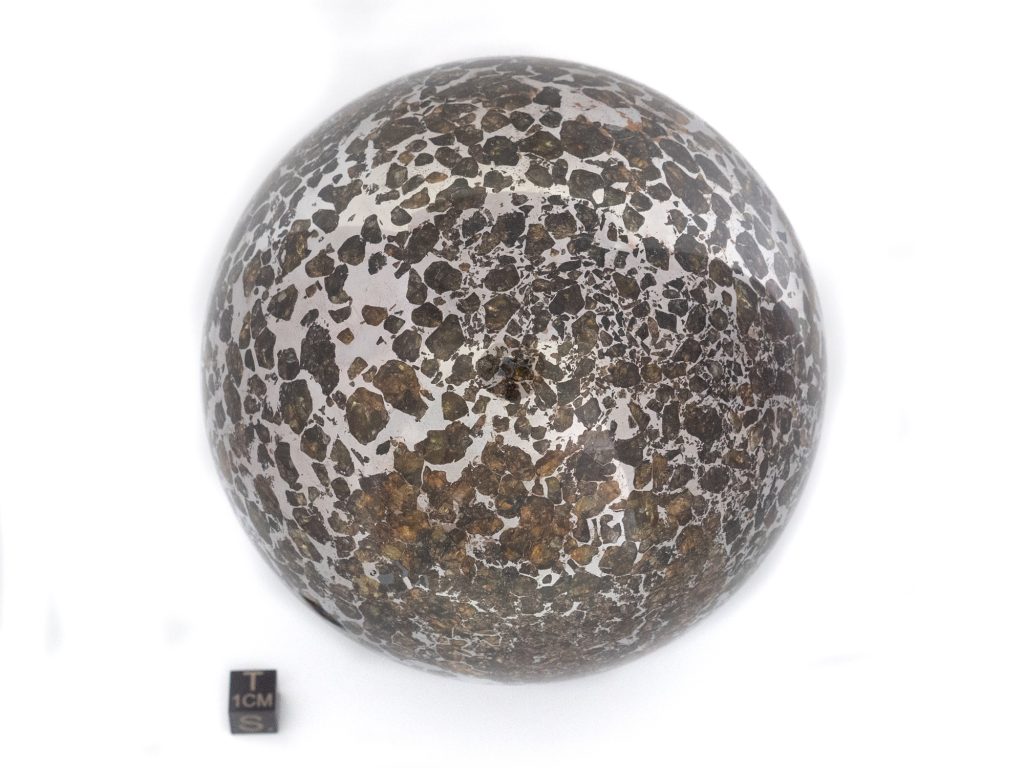
Meteorite Spheres
The meteorite sphere — known to some as “The Extraterrestrial Crystal Ball” — showcases a magnificent fusion of earthly craftsmanship with extraterrestrial materials. In order to create these wonders, a mass of meteorite was first cut into a cube using a special diamond-tipped saw and then milled, over time, into its current spherical shape. The creation of meteorite spheres is costly, both in terms of time and material, as a significant portion of the raw material is lost in the cutting and milling process — it literally goes up in dust and is known as “cut loss.”
Further, spheres made of pallasite meteorites are rare, because of the fact that olivine is gemstone that rates 6.5 to 7 on the Mohs scale, encased in a much harder nickel-iron matrix, careful and exacting polishing and preparation methods had to be employed to forge this miniature, gem-studded planet.
Highly collectible and entirely one-of-a-kind.
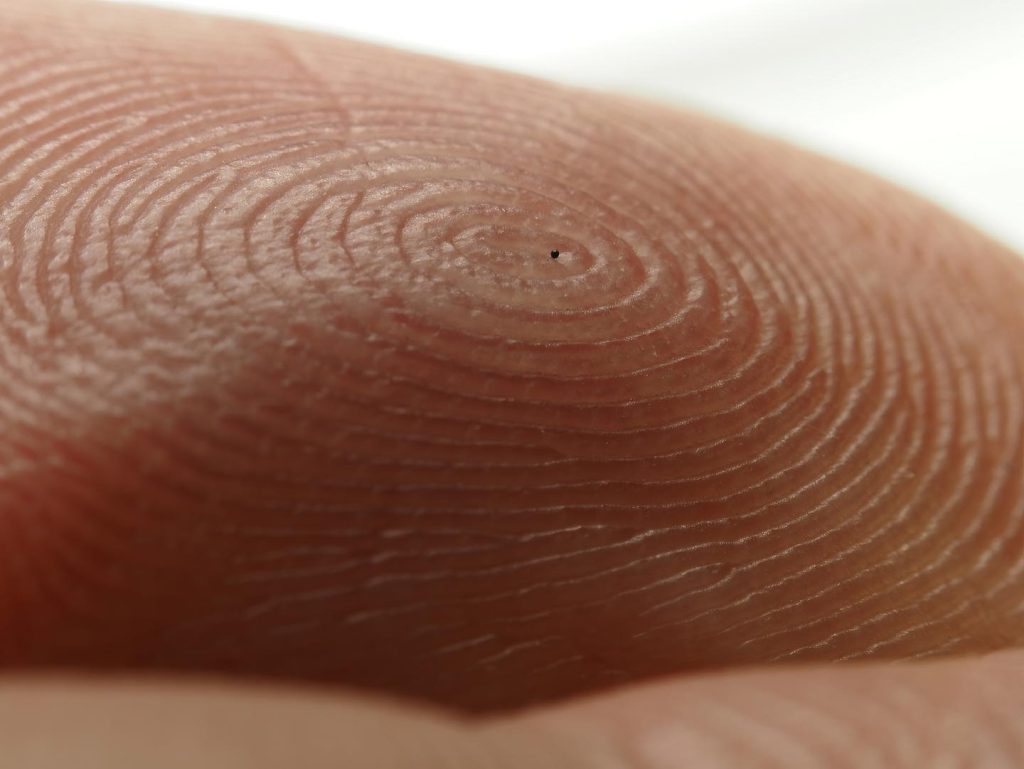
Micrometeorites
The Smallest Meteorites on Earth: Micrometeorites
Micrometeorites are tiny particles of extraterrestrial origin that regularly fall to Earth—an estimated 5,200 to 7,000 metric tons of micrometeorites enter Earth’s atmosphere every year.
Because of their small size, most micrometeorites burn up upon entering the atmosphere, so only a fraction—about 100 metric tonnes a day—make it to Earth as meteorites. These microscopic objects, which range in size from a few microns to a few millimeters, are fragments of comets, asteroids, and other bodies in the solar system.
In many ways, these micros can not be compared to their larger cousin, the meteorite. Unlike meteorites, micrometeorites melt completely and recrystallize upon entry into our atmosphere. Though they are small, they are incredibly important because they provide scientists with a wealth of information about the early solar system and the processes that formed it.

Nininger Stars
Harvey Harlow Nininger, the godfather of modern meteoritics, is a hero to both meteorite scientists and private collectors alike. He was a founder of the Meteoritical Society, started the world’s first full-time commercial meteorites business, opened the world’s first private meteorite museum, and carried out decades of groundbreaking, pioneering work in understanding craters and meteorite fall characteristics.
Always the entrepreneur, Dr. Nininger also developed the world’s first celebrated meteorite collectible — the Nininger Star. He laboriously collected thousands of minute spheroids — tiny, drop-like globular pieces of iron meteorite from the famous Meteor Crater site in Arizona — and ingeniously adhered them to stars, which he cut from sheet metal aluminum. These stars are incredibly rare and highly collectible today, not just because Nininger fashioned and designed them, but also because collecting spheroids is no longer allowed at the impact site.
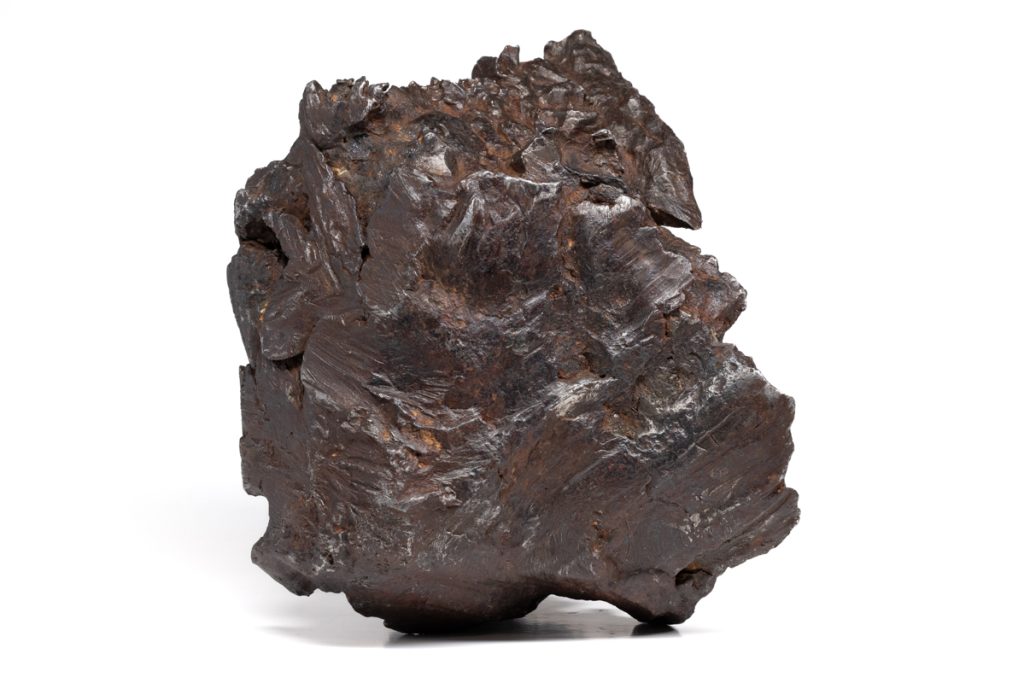
Sikhote-Alin
Iron, IIAB Witnessed fall in Russia, February 12, 1947 The Sikhote-Alin meteorite is a famous witnessed fall that landed in Russia at 10:38 am on February 12, 1947. That morning an estimated 70-ton mass blasted through Earth’s warm atmosphere at speeds of 25,000 mph or more. During its flight, experts estimate the surface of the Sikhote-Alin meteorite reached at least 3,000 degrees Fahrenheit. As the mass hurtled closer to our planet’s crust, the pressure of ever-denser air forced it to shear and fracture along its crystalline planes, causing a monumental aerial explosion that was heard by human observers on the ground. The shockwave reportedly knocked over forest workers as twisted shards of metal rained down among snowy pines. Sikhote-Alin meteorites fall into two categories: shrapnel fragments, which are melted, torn, and blasted, resembling the remnants of wartime bombs. Others are complete pieces, their surfaces rounded and sculpted by ablation into fantastical shapes, and covered or partially covered with scalloped indentations called regmaglypts or thumbprints. These sculpted pieces, known as individuals, present beautiful natural formations and comprise only about 20% of all recovered masses.

Tiglit
Enstatite achondrite, Aubrite
Witnessed Fall, South, Morocco December 9, 2021
In early December, around 8:30pm local time, several residents in southern Morocco reported seeing a fireball, moving in a northwest to southeast direction, somewhere east of Guelmim and northeast of Laayoune. Meteorite hunters headed into the field a few days later to recover the meteorite and to interview eyewitnesses. It was reported a large explosion followed by three sonic booms was heard. Other eyewitnesses reported seeing a blue fireball followed by a green light and also that the valley smelled of sulfur following the impact. Six large pieces and many smaller fragments were recovered.
In March of 2022, Tiglit was classified as an aubrite, a group of meteorites named after the stone that fell near France in 1836. Aubrites originated from an asteroid and are achondrites, meaning they do not contain chondrules and are thought to have come from a different parent body than the chondrites. Research shows that aubrites may have some of the highest cosmic-ray exposure ages of any stony meteorites, up to 120 million years and a small near-Earth asteroid, 3103 Eger, is suspected of being the parent body of the aubrites.

Wabar
A rare sand impact site in a now inaccessible region of the Saudi Arabian desert, the Wabar crater field is one of the most mysterious impact sites on Earth. The world’s only known sand crater of significant size, the Wabar crater field was produced when a IIIAB iron meteorite weighing many tons impacted the Earth. The heat and pressure generated by the impact formed a diverse and remarkable collection of Wabar Impactites, including exquisite black glass spheres known as Wabar Pearls. These also include pieces of the strange Wabar Oxidized Iron, a weathered iron meteorite fragment, and the Wabar Iron in its unaltered state!
The Wabar crater is one of about fifteen craters on Earth from which we have recovered meteorite fragments. An interesting anecdote about the site was reported to our colleagues — some of the iron fragments from Wabar appear “popped.” This phenomenon is thought to be caused by high temperatures and pressures at impact, causing the iron to oxidize rapidly and give the Wabar Oxidized Irons the classic “weathered” appearance, which typically indicates they have been on Earth a substantial amount of time.